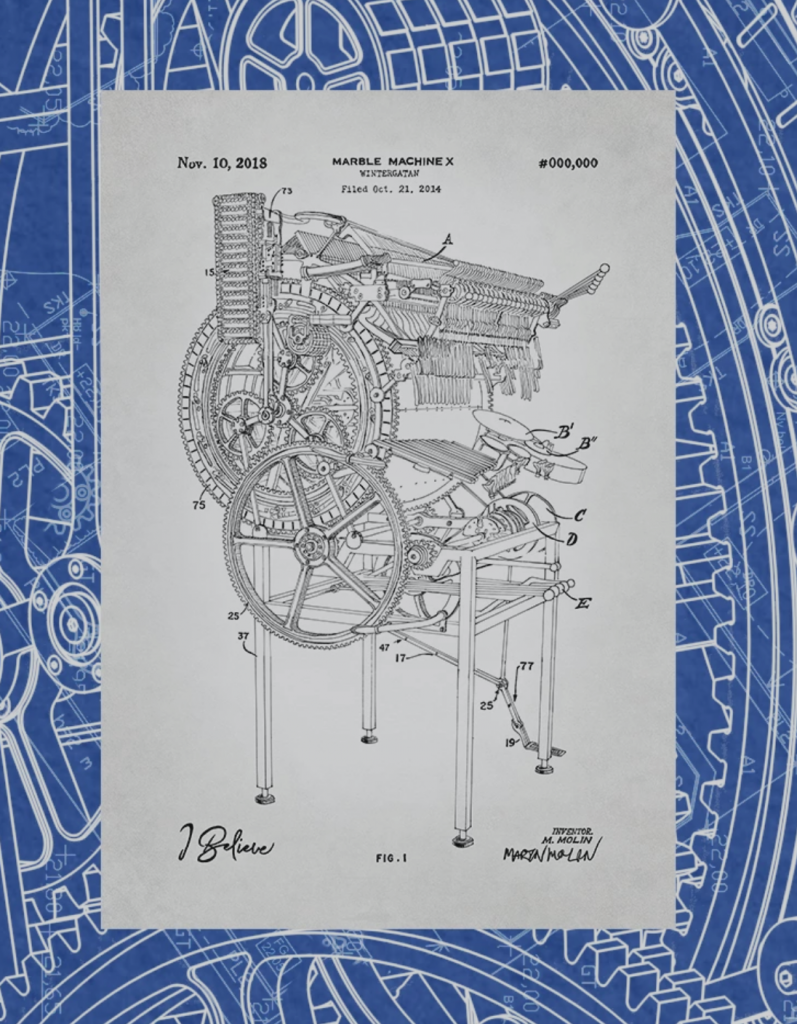A great example of music and computation is Wintergatan‘s Marble Machine. The music is visualized physically using metal marbles running on a track. These marbles are carried up using a wheel (physically operated by the musician), dropping onto various surfaces such as vibraphone, bass guitar, and cymbals. Other instruments, such as the the kick drum and snare drum are emulated using contact microphones and other software. The music “scores” are actually two giant wooden wheels arranged with LEGO pegs. These pegs, when turning, knock into specific keys which then trigger the release of a marble above a certain vibraphone key.
The person responsible for the machine, Martin Molin, designed and built the machine with the use of a 3D printer and a CNC machine. While not purely a computational project, this project involves the use of computers for the purpose of emulating drums as well as overlaying the music tracks onto each other. It is also computational in the sense that this machine and its parts all had to be carefully calculated and coordinated in order to work. What I admire most about this project is the way in which Molin chose to design the machine. It could’ve been very possible to manifest it as a linear marble track, but Molin chose to design a self-contained machine in which the loop of the marbles is closed. It is also amazing to see the actual physical movements behind the sound that is being produced.

![[OLD FALL 2019] 15-104 • Introduction to Computing for Creative Practice](wp-content/uploads/2020/08/stop-banner.png)